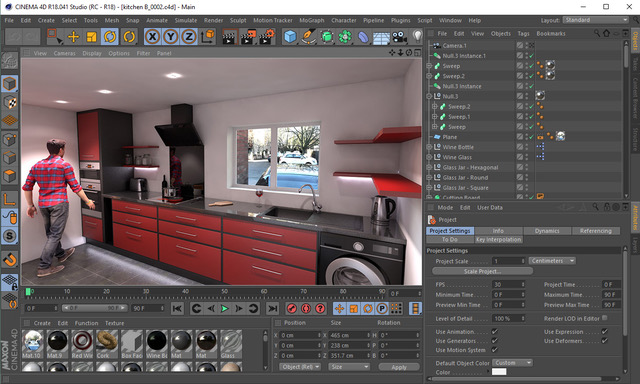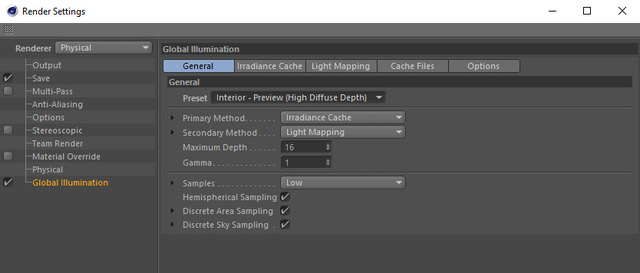How to achieve Faster Renders in Cinema 4D
Tired of hanging around all day waiting for your Cinema 4D renders to finish? Give these settings a go and see how much faster you can get the software to render.
Reflection Depth
The first thing you can do with projects to speed them up is reduce the number of times a reflection can bounce from one shiny surface to another. By default C4D calculates reflective surfaces bouncing back and forth 5 times, this is overkill for most people. You can claw back some of your time by entering the render settings, going to the Options tab and reducing the ‘Reflection Depth’ setting from 5 to 1. If you notice the rendering looks different from before, try a value of 2 instead.

Global Illuminations
We all know that Global Illumination is pretty much Cinema’s slowest feature, but there are a couple of changes which will speed up your rendering noticeably. Go to the Global Illumination tab and select the preset called ‘Interior – Preview (High Diffuse Depth)’ this will help a great deal. To speed things up even further, visit the Light Mapping tab at the top of the render settings window and enable ‘Build Radiosity Maps’. This will give you an extra kick of speed at the expense of higher memory usage.
Physical Render Setting
If your project uses lots of slow blurry reflections and frosted glass, switch the render engine option at the top left of the render settings window from Standard to Physical. Then under the Physical tab set the Quality to Automatic. This will now do one of two things, either everything gets much slower, or much faster. It’s a shot in the dark but it’s worth giving it a go. If it all looks a bit grainy, you can play with the ‘Shading Error Threshold’ setting. Use values between 5% and 30%; lower values are cleaner but slower.

SDS Objects
Another thing which catches people out is the quality of SDS (Subdivision Surface) objects. Have a look in your object list for the green SDS icon. If you think your test renders in the 3D editor look fine, then you can probably reduce one of the settings. Select the SDS, then have a look at the value of the ‘Subdivision Editor’ setting; copy this value into the box below which reads ‘Subdivision Renderer’. Do this for all your SDS objects and you will speed up your final renders.
If you like what you see here, we have a lot more to show you on our Cinema 4D training courses including scheduled and private bespoke sessions to focus on any level or rendering specifically if desired.

 0345 363 1130
0345 363 1130 info@xchangetraining.co.uk
info@xchangetraining.co.uk




